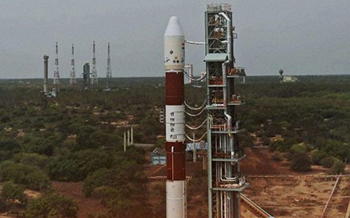 Chennai, Jul 10: Science and Technology Minister Jitendra Singh said on Wednesday (July 9) that India has earned around 40 million euros launching 15 foreign satellites from 2011 till date. Singh is also the Minister of Earth Sciences, Department of Atomic Energy and Department of Space.
Chennai, Jul 10: Science and Technology Minister Jitendra Singh said on Wednesday (July 9) that India has earned around 40 million euros launching 15 foreign satellites from 2011 till date. Singh is also the Minister of Earth Sciences, Department of Atomic Energy and Department of Space.
While replying to a question in the Lok Sabha, Jitendra Singh said that the Indian Space Research Organisation (ISRO) launched 15 foreign satellites and 14 Indian satellites during fiscal years 2011-2014 and in this fiscal. The minister also said the revenue earned through launch of foreign satellites was 39.82 million euros.
According to Jitendra Singh, Department of Space has revealed the plan for space programme till 2020. The plan pictures development of advanced launch vehicle systems, thematic earth observational satellites with improved resolution, high-power, high-throughput communication satellites, microwave multi-spectral remote sensing satellites, weather and climate studies, constellation of satellites for regional navigation, development of critical technologies for human spaceflight and satellites for space science and planetary exploration purposes.
The minister also added that India has spent Rs 349.9 crore on its Mars Orbiter Mission till March 31, of the total project outlay of Rs 450 crore. The Indian space agency ISRO had launched the Mars Orbiter (Mangalyaan) on November 5, 2013.





Comments
Add new comment